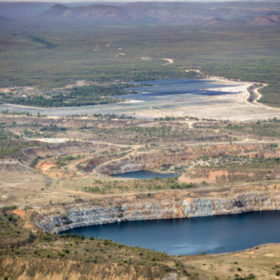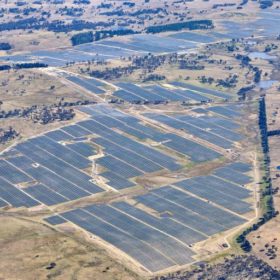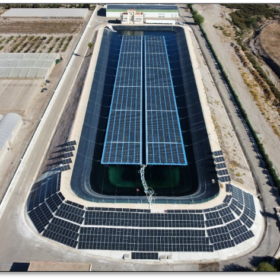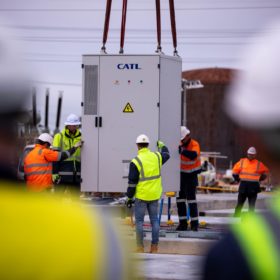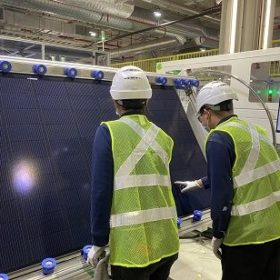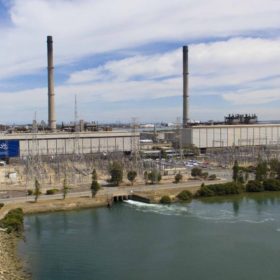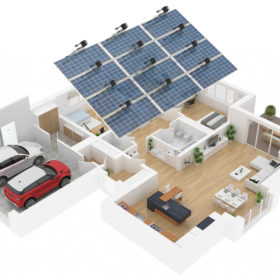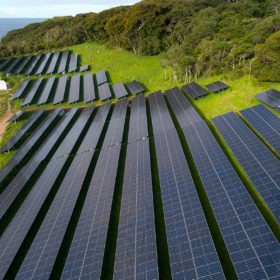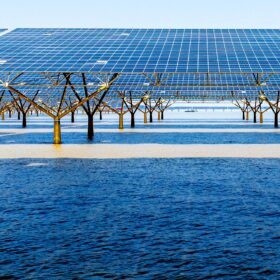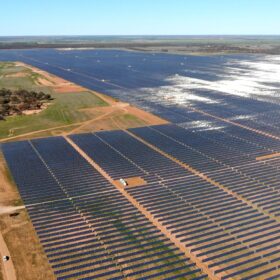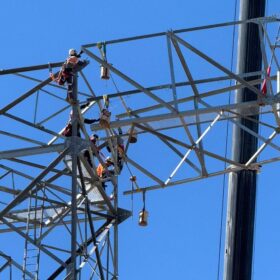Molten aluminium storage startup enters Australian market, apparently
In a decidedly confusing announcement, Swedish molten aluminium storage startup Azelio says it has secured a conditional order from relatively unknown Australian company MPG Built. Azelio says the order will see it provide “energy-as-a-service” using five of its TES.POD storage units combined with solar power.
Genex boosts capacity of Kidston clean energy project
With construction underway on a $295 million (USD 197 million) transmission project to connect the landmark Kidston Clean Energy Hub to the grid in far north Queensland, developer Genex Power has announced plans to boost the generation capacity of what is already Australia’s largest hybrid energy project combining wind, solar and pumped hydro.
Acciona announces new 1 GW project in Sunshine State
Queensland will be home to what the state government claims will be one of the largest onshore wind projects in the world after Spanish renewable energy giant Acciona Energia announced plans to develop a new 1 GW project in the state’s southwest.
Councils commit to solar-driven renewable energy power plan
Seven New South Wales local councils have united to secure a long-term electricity purchasing agreement utilising the 115 MW Metz Solar Farm which will deliver enough renewable energy to allow the participating councils’ facilities and assets to transition to 100% renewables in a staged approach from January 2023.
Floating PV for water pumping, desalination
An irrigation community has built a 786 kW floating solar array on a small water reservoir in Murcia, Spain. The facility will provide power for a solar water pumping system, a desalination unit, and the community itself.
Renewable projects report prompts call for energy market reform
The Clean Energy Council has reiterated calls to reform the grid connection process to provide increased certainty and security for investors after a new report revealed only one renewable energy generation project reached financial close in Australia in the third quarter of 2022.
REC Group rolls out new solar module for rooftop market
Norway-based solar manufacturer REC Group has commenced production of the fifth generation of its TwinPeak module series, offering improved power outputs from 395 W to 415 W and efficiencies ranging from 20.1% to 21.1%.
Rise of renewables sparks closure of Torrens Island gas power plant
Energy giant AGL has disclosed it will shutter its gas-fired Torrens Island B power station in South Australia within four years, citing the impending completion of a new electricity interconnector that will link power grids across three Australian states, unlocking gigawatts of new wind, solar PV and storage projects.
Energy optimiser SolarEdge expands into full home solution
Customers’ desire for fast, simple access to rooftop solar has driven the industry towards one-stop solutions, with all system components under the same brand and warranty arrangements, and integrated under a proprietary intelligent digital control system. pv magazine Australia spoke with Gavin Merchant, country manager for Australia and New Zealand, about the new SolarEdge Home equation and the economic drivers of full rooftop package adoption.
Photon selects NSW for first solar + battery project acquisition, intended as European ‘prototype’
Dutch company Photon Energy Group has acquired its first utility scale solar and battery project, opting for a venture 500 kilometres northwest of Sydney which it says will become a “prototype” for its European portfolio.

